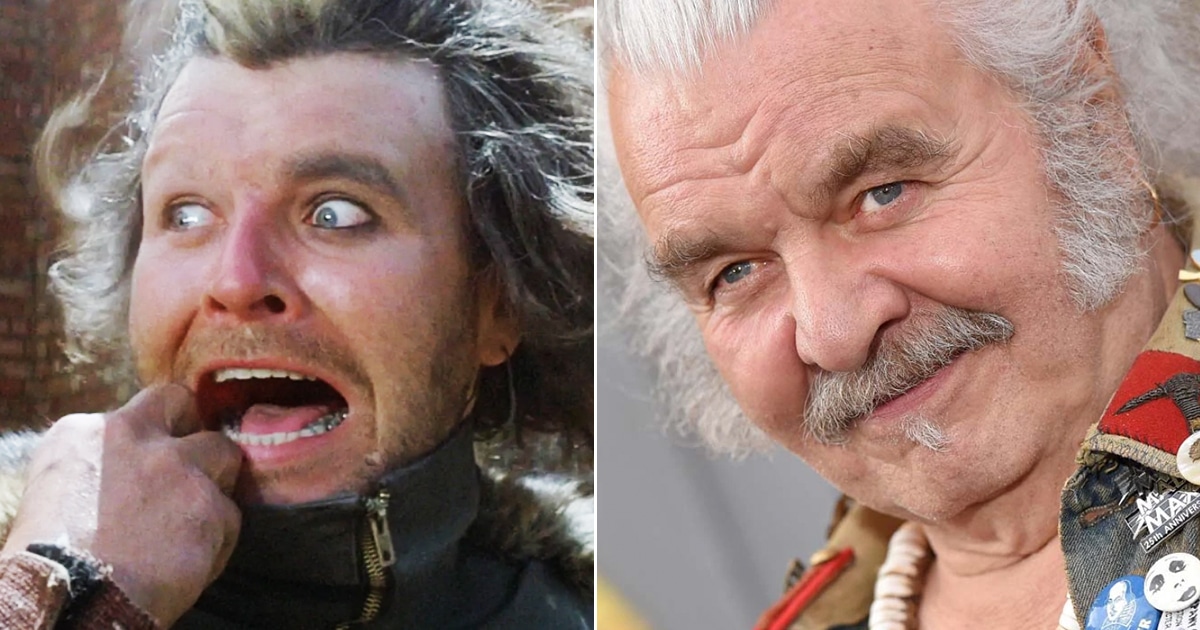Mad Max, from director George Miller, is a post-apocalyptic film that tells the story of Max Rockatansky (played by Mel Gibson), a Main Force Patrol officer who is trying to put a lid on the activities of a brutal biker gang operating in the area. Despite the film’s shoestring budget, it managed to make over $100,000,000 worldwide – and deserves its share of credit for changing the face of the Australian film industry.
If you were a fan of the original Mad Max then you’ll love this list of 20 things you never knew about the film.
20. Director George Miller raised the money for the film by working in a hospital
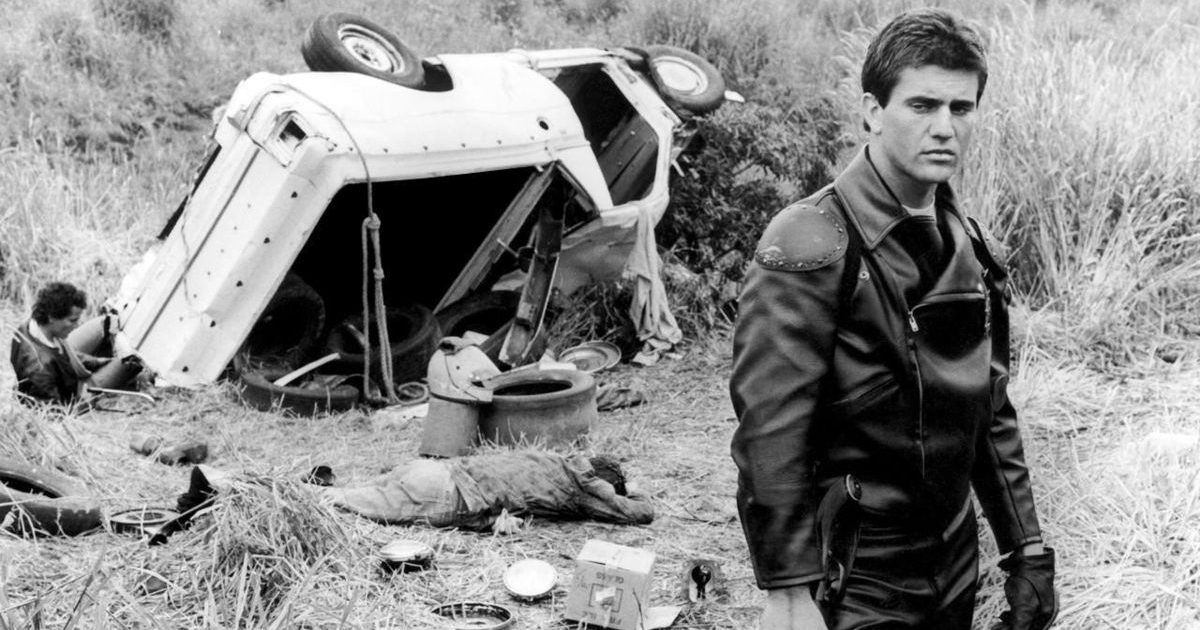
The original Mad Max film was shot on an extremely low budget. It was filmed over 12 weeks on the outskirts of Melbourne – deemed to resemble a post-apocalyptic landscape – and cost director George Miller $350,000 to produce. But even that $350,000, a minuscule budget relative to movie productions that can spiral into the tens and even hundreds of millions, proved quite the challenge to raise. Along with Byron Kennedy, the prospective producer, Miller shopped the film to several studios. They initially sought a government grant, but the Australian government at the time was focused on investing in arthouse films, not post-apocalyptic blockbusters, and as such Kennedy and Miller struggled to find funding for their action-horror.
Eventually the pair secured partial funding for the film, but Kennedy and Miller still had to contribute some of their own money towards the film’s budget. As a result, they had to employ some innovative methods to earn more money. One scheme was for Miller, a trained doctor, to work as an emergency medical responder, with Kennedy ferrying him in a car to chase accidents that had happened!
19. Mel Gibson won the part after he got into a fight the night before auditions took place

Mel Gibson was actually accompanying his sister to her audition for Mad Max when he managed to bag a part in the movie. Mel had been in a bar fight the night before, on the losing side, and – according to Gibson himself – his head looked like “a black and blue pumpkin.” That some real Main Force Patrol behaviour! He was told to come back in three weeks because they “needed freaks” for the film. However, when Gibson returned the producers didn’t recognise him from his original audition because his injuries had healed, and he successfully read for the part of Max Rockatansky.
Miller had originally sought an American actor to fill the lead role, and had travelled to Los Angeles in 1976 in order to secure a star, but he was unable to satisfy the exorbitant fees demanded by established Hollywood actors. But when Gibson auditioned, Miller knew instantly that he’d found his actor. “I remember George calling me,” said Kennedy, “and saying, ‘Do you want to come and look at footage of some auditions? I think we’ve got a Max.’” They’d found their original Road Warrior.
18. The blue van used in the opening scene belonged to the director
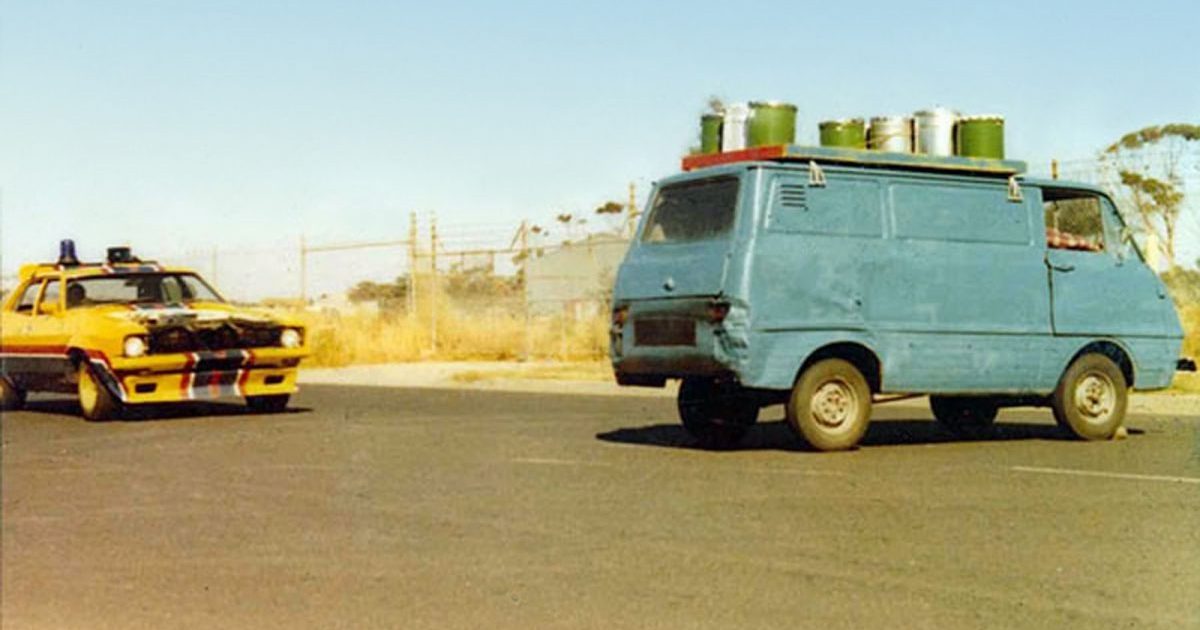
The spectacular opening scene of Mad Max sets the tone for the explosions, violence and bleakness of the film. It’s also the subject of the production’s most famous urban myth. Legend has it that the soon-to-be-destroyed van was Miller’s actual vehicle, used in the scene because the production was rapidly running out of money and couldn’t afford another car. Miller’s Bongo was in fact used in Mad Max, but only for the shots in which the van is driving. The vehicle that’s wrecked was retrieved from a scrapyard, and had had its engine removed.
To solve the no-engine problem, crew members ended up having to push the van into the path of the oncoming cars. (You can tell the van doesn’t have an engine because of the dramatic way in which it spins and tumbles on impact due to its lower weight.) Due to these budget constraints, apparently only around 20% of the scheduled car scenes ended up being shot – but thankfully Miller was at least able to drive home at the end of the day!
17. The extras were paid in beer rather than money

Mad Max was a film like no other – for one thing, Australia hadn’t yet had that kind of action-filled production (more on that later) so the filming infrastructure and financial backing just wasn’t there. Due to these issues, the team had to find creative ways to cut corners. As an example, several of the extras ended up getting paid in beer for services rendered – which was often a lot more than just standing around! Because of the low budget, several extras were required to bring their own cars and vehicles for certain scenes.
In one particularly difficult case, a truck driver was paid $50 and a case of beer to run over a motorcycle with his truck for the final scene of the film. However, the driver didn’t want to damage his truck in the process – it was his livelihood, after all – and so the production team had to attach a shield to the front of the truck and paint it to look like part of his vehicle.
16. Hugh Keays-Byrne would return to the Mad Max universe as a different character

Two of the main cast members, Hugh Keays-Byrne (Toecutter) and Roger Ward (Fifi), had previously appeared in Stone, a film about biker gangs! Funnily enough, this is also one of the movies that was said to have inspired George Miller to create Mad Max. Premiering in 1974, Stone focuses on an eponymous detective – played by Ken Shorter – who is investigating a notorious biker gang, several of whose members have supposedly been murdered by rivals.
As Stone gets to know the bikers better (including Keays-Byrne’s Toecutter-like character), he’s eventually forced to choose between his comfortable urban life and the adventure of the road, as well as deal with the political conspiracy behind the killings. Besides Hugh Keays-Byrne and Ward, several of the film’s ancillary actors are seen in Mad Max: Vincent Gil, David Bracks, and Reg Evans. To complete his typecasting for big car movies, Keays-Byrne returned to the Mad Max series again in Fury Road (2015), playing Immortan Joe.
15. The vast majority of violence in the film happens off-screen
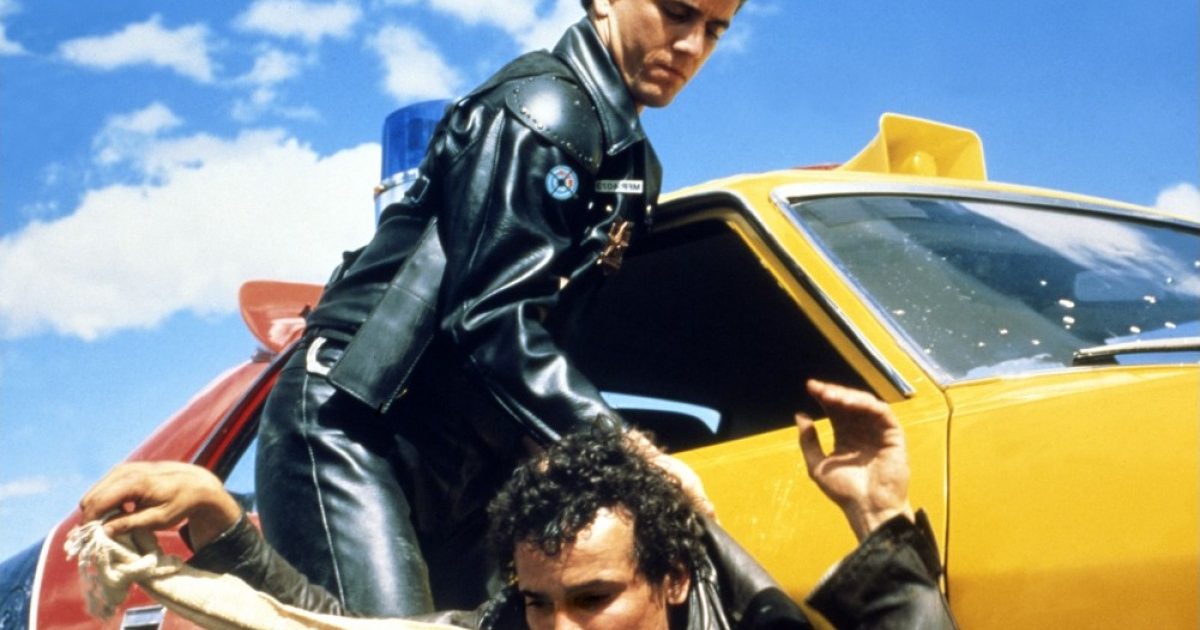
After its initial release, Mad Max proved to be divisive among critics. In particular, some complained about the high levels of violence in the movie. One critic, Phillip Adams, was especially strident in his denunciation of the film, calling it “a special favourite of rapists, sadists, child murderers and incipient Mansons,” with “all the emotional uplift of Mein Kampf.” So, not a glowing review. Tom Buckley of the New York Times described the film as “ugly and incoherent, and aimed, probably accurately, at the most uncritical of moviegoers.” That’s not a version of the movie we recognise.
However, despite what these incendiary critiques may have you believe, Mad Max is far from an explicitly violent movie – in fact, the most intense scenes of violence occur off-screen, implicitly, with the audience only seeing the aftermath. George Miller hit back at the criticism and estimated that there are only 50 frames of explicit violence in the whole film, far less than other popular films of the time.
14. The film was banned in New Zealand because of Johnny the Boy
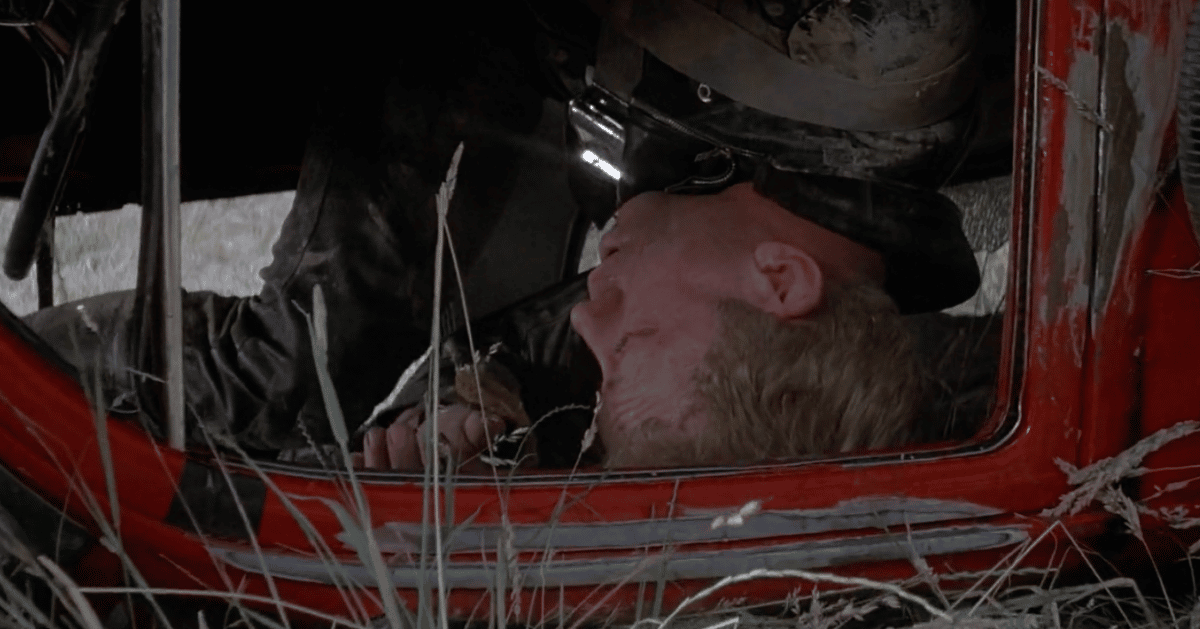
To be fair to Adams and Buckley, one episode of implicit violence was so brutal that it resulted in the film being banned in neighbouring New Zealand for nearly five years, without even a censored version being available. After gang member Johnny the Boy is released from custody, Goose is furious. Not only that, but Johnny takes his revenge by sabotaging Goose’s motorbike and later throwing a brake drum through the windshield of his car, causing him to crash. Johnny the Boy then burns Goose alive in the wreckage.
The scene is pivotal, and adds to Max’s increasing fury with the gang, which will eventually result in (probably) killing all of them. Goose is his best friend. But unbeknownst to Miller and Kennedy, the sequence would land their film in hot water just over the Tasman Sea. Unfortunately, the very incident that results in the death of Goose had occurred in real life not long before the film’s release, and it had also involved New Zealand biker gangs, meaning news of the film’s imminent release was greeted with immense distaste. As a result, the movie was banned. Mad Max would eventually be shown in New Zealand in 1983, following the huge success of Mad Max 2 (1981). However, it was only shown as long as it had an R18 certificate attached.
13. Some very rude graffiti appears at the start of the film

Since Mad Max was very much a special project for director George Miller, it’s little surprise that he included a handful of Easter eggs in the film for only the most eagle-eyed of viewers. And because the film was already operating on a hideously low budget, it makes sense that they’d have to exist in shoestring form – in this case, some graffiti.
For those keen enough to observe it, you can spot a boulder at the beginning of the film that’s sprayed with what you may initially think are incomprehensible symbols. But if you’re Greek, you’d understand exactly what it says, and you’d be aghast! The writing simply says ‘f**k you.’ This is a special nod both to the abrasive tone of the film and Miller’s Greek heritage. His parents were refugees who anglicised their original name on moving to Australia: Miliotis.
12. Mel Gibson and Steve ‘Goose’ Bisley were flatmates in Melbourne

In Mad Max, actors Mel Gibson and Steve Bisley play Max and Goose, two friends and fellow police officers who are attempting to capture the biker gangs causing mayhem in their town. In real life, Gibson and Bisley were roommates at Australia’s National Institute of Dramatic Art in Sydney. In fact, it was Bisley, in talks to play Goose, who encouraged Gibson to audition for the part of Max, one that would make his career. “I came out of drama school with Mel Gibson,” said Bisley. “We came out and went straight into the film. It probably wasn’t until we went to the premiere and I was sitting there in the front row with the other actors [that I was] blown away by it.”
While Gibson’s movie career (its highlights and what you may consider definite lowlights) is well known, Bisley has starred in several films since being seen as Goose in Mad Max, most recently and famously known for portraying Dan Cody in Baz Luhrmann’s The Great Gatsby (2013). As Australia’s premier acting institution, The NIDA has produced most of Australia’s leading actors, including Cate Blanchett and Hugo Weaving, some of Hollywood’s greatest movie stars.
11. It was Roger Ward’s idea to wear a scarf as Fifi

In of the more famous scenes in the movie, Roger Ward – who plays the eccentric police chief Fifi Macaffee – is bare-chested but wearing a long, black scarf. Ward later revealed in an interview that the idea had been his. “If I was going bare top, I was going to wear a tie.” Outside of Mad Max, Ward is known both as a pioneer of Australian acting and a steadfast advocate of gay rights. Having worked in theatre and radio from an early age, Ward was an established figure by the time the TV and film revolution in Australia kicked off in the 60s. He is also a writer, and became a nationally known figure after his then-unpublished novel The Set was adapted into a movie. The full text of the novel was released in 2011.
“Historically the gay community has been hounded for an eternity,” said Ward in 2011, “And a person of that persuasion was, at that time at least, considered to be some sort of freak, someone to be laughed at, to be ridiculed, derided, beaten up, ostracised, even put to death. I have now performed in more than 80 feature films and over 2000 television roles, plus probably 50 stage plays in which I have played the gamut of hero, monster, womanizer, drag queen, boxer, wrestler, incestuous father, stroke victim, truck drivers, policemen, cowboys, bikers, and a serial killer. I have performed comedy, horror, drama and Shakespeare and never once was my sexual preference ever raised.”
10. There was so little money, Miller had to edit the film at home

Tony Paterson took on editing for four months but had to leave because he was contracted to make Dimboola (1979), an independent adaptation of the bawdy marriage play. Once Tony Paterson left, it was up to Miller to make up for lost time – and, since the movie was hugely lacking in financial heft, post-production would become an underfunded and arduous process. Miller initially enlisted Cliff Hayes to help cut the film. Hayes, a producer and editor, would later go on to edit I Am Evangeline (2015) – and, incidentally, a single episode of the TV series adaptation of the ill-fated fantasy film The Beastmaster (film 1982, TV series 2001)
But the most difficult period of post-production was the final cut, which Miller put together with Byron Kennedy in his own house for a gruelling further three months. The process the director described thus: “[Byron Kennedy] would cut sound in the lounge room, and I’d cut picture in the kitchen.” Byron Kennedy would return to work on the sequel before his premature death in 1983.
9. It transformed the Australian film industry
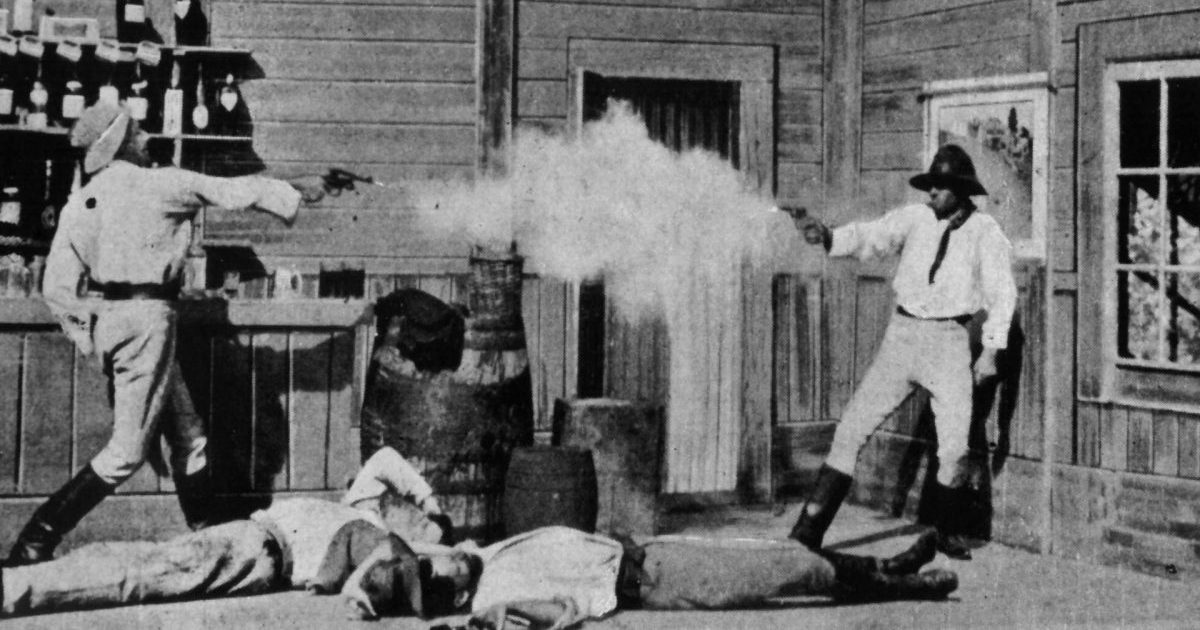
Mad Max is widely regarded as the film that opened up Australian movies to a global market. On a shoestring budget it grossed $100,000,000 at the worldwide box office and set a new record for most profitable independent film of all time. (It held that record for 20 years until it was out-grossed by The Blair Witch Project in 1999.) Max Rockatansky has been described as “Australia’s first global action hero,” and the film was instrumental in establishing the quintessential Australian road movie as a genre that would fit on the world stage and spawn franchise after franchise.
In fact, Australian cinema produced what is widely regarded as the world’s first feature-length film, The Story of the Kelly Gang, in 1906, but a lack of investment in the arts led to a significant drought in Australia’s acting and producing talent. With Gibson fresh out of NIDA, however, and Miller fresh out of the scalpel-holding end of the operating theatre, Mad Max set a new standard how Australia and cinema would be perceived the world over. “…the bush and outback provided a stunning backdrop for human drama to play out against,” the Guardian retrospective continues. “Something magically gothic, beautiful, elemental, frightening and unique was captured on screen.”
8. Miller’s time as an A&E doctor inspired the film’s violence and vehicular carnage
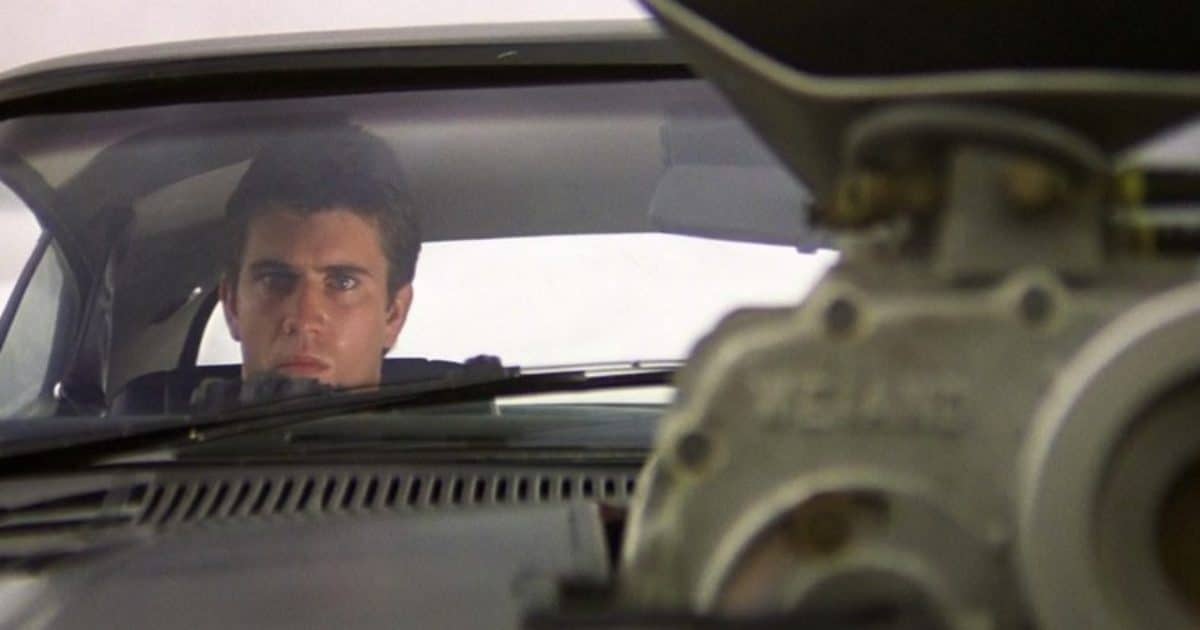
You may think that George Miller’s stark change of career from doctor to director may indicate a determination to leave behind a career that he found unfulfilling or had been forced into. In fact, as bizarre as it may seem, the line between his medical and filmmaking careers were significantly blurred when working on Mad Max. George Miller was first inspired to make Mad Max after seeing hospital patients at the A&E where he worked rolling in from horrific motorcycle and automobile accidents. Most of the injuries he witnessed were later added into the film.
Tragically, Miller also lost three friends to motorbike accidents growing up and drew on this experience when making the film. Motorbike accidents are an ongoing issue in Australia. Rosie Bailey, originally cast as Jessie, had to drop out of filming only four days into shooting after a motorbiking injury.
7. The motorcycle gang extras were genuine Australian outlaws
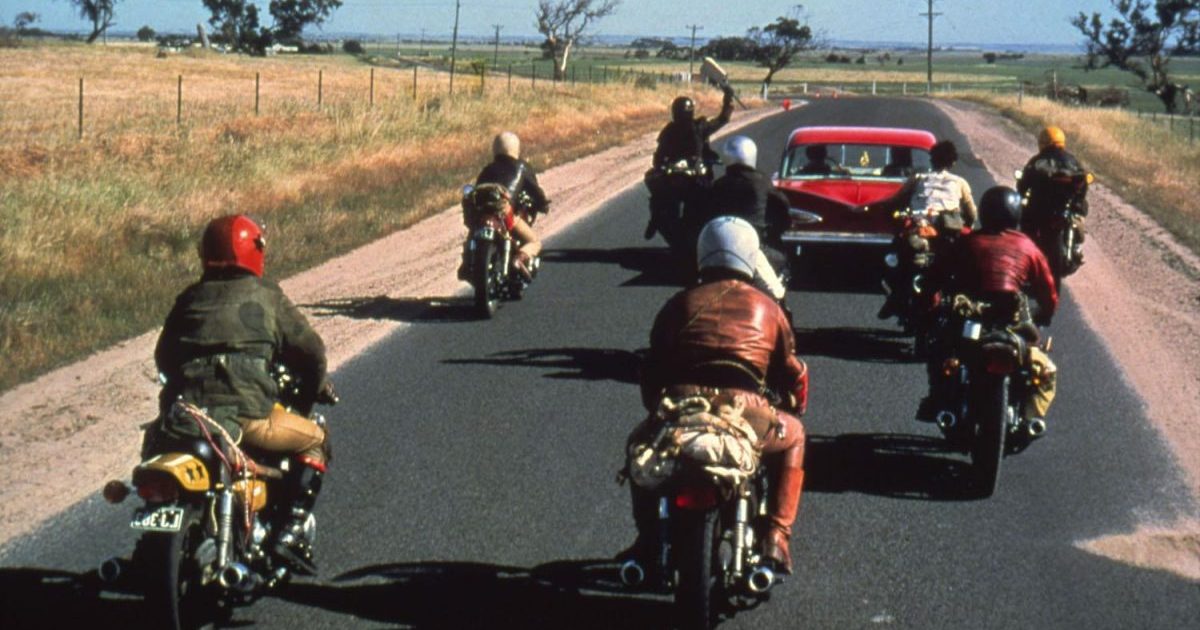
To add a nice touch of authenticity to filming, most of the motorcycle gang extras who worked on Mad Max were members of genuine Australian outlaw biker clubs, including the notorious ‘Vigilantes’. These extras even brought their own bikes to the set. Many were forced to travel from their Sydney residences to the filming locations in Melbourne because the budget couldn’t afford to pay for aerial transport. “They got on their bikes and rode them down and kind of rehearsed being a bikie gang on the way down,” said Miller.
That said, ‘outlaw’ motorcycle gangs are so-called not necessarily because of any criminal activity, rather because they deliberately do not conform to the rules of any local or national motorcycle associations. Since the gangs are often concerned with prestige and loyalty to biker culture, it’s likely that they jumped at the chance to promote themselves and their passion through what would become a major piece of Australian cinema.
6. Most of the stunt driving performed in the film was illegal
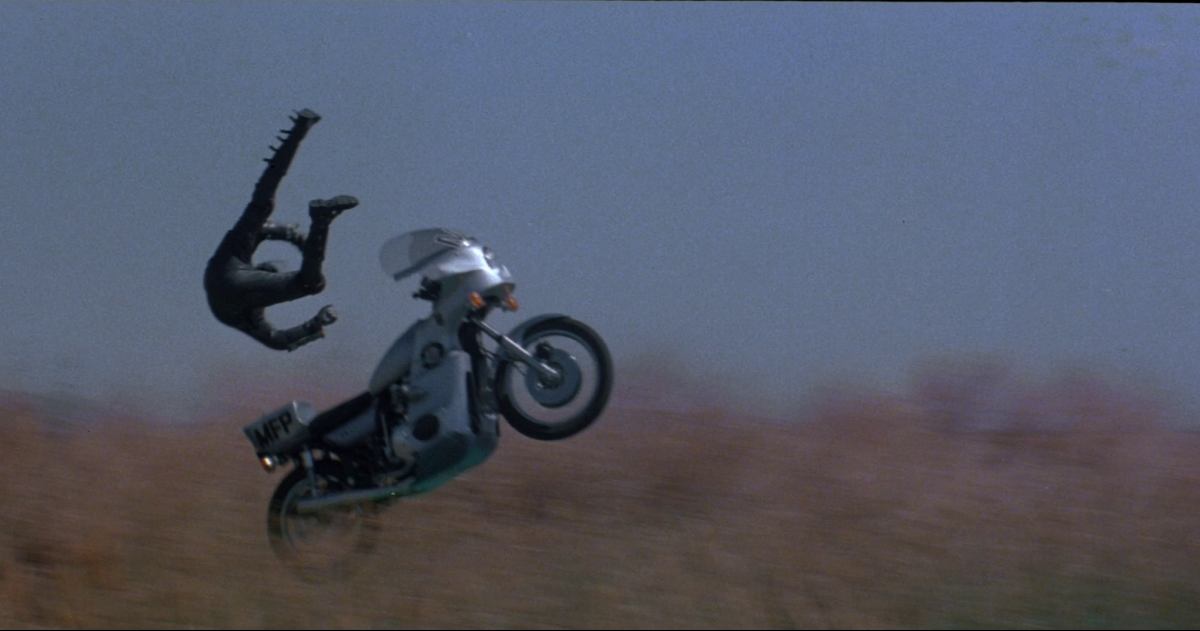
Unlike modern movies in the franchise, most of the stunts performed in Mad Max’s action-packed scenes were illegal and therefore had to be done very quickly so that the Australian authorities wouldn’t find out what was going on during filming. Miller’s preferred phrase for the shoot was ‘guerilla filmmaking’; given the film’s low budget and the lack of industry precedent, much of the filming took place illicitly. “It meant that we had to sweep up the roads after there was a car crash. Byron and I would stay back at night and sweep up the roads.”
This approach is especially obvious in what was chronologically the first scene shot of the production: when Johnny is on the phone on the overpass. When Johnny breaks the chain and hastily runs off, it’s because the crew didn’t have the permission to be filming on the overpass at the time, among typical car traffic. Run, Johnny!
5. Max Rockatansky was named after a pioneering medical figure
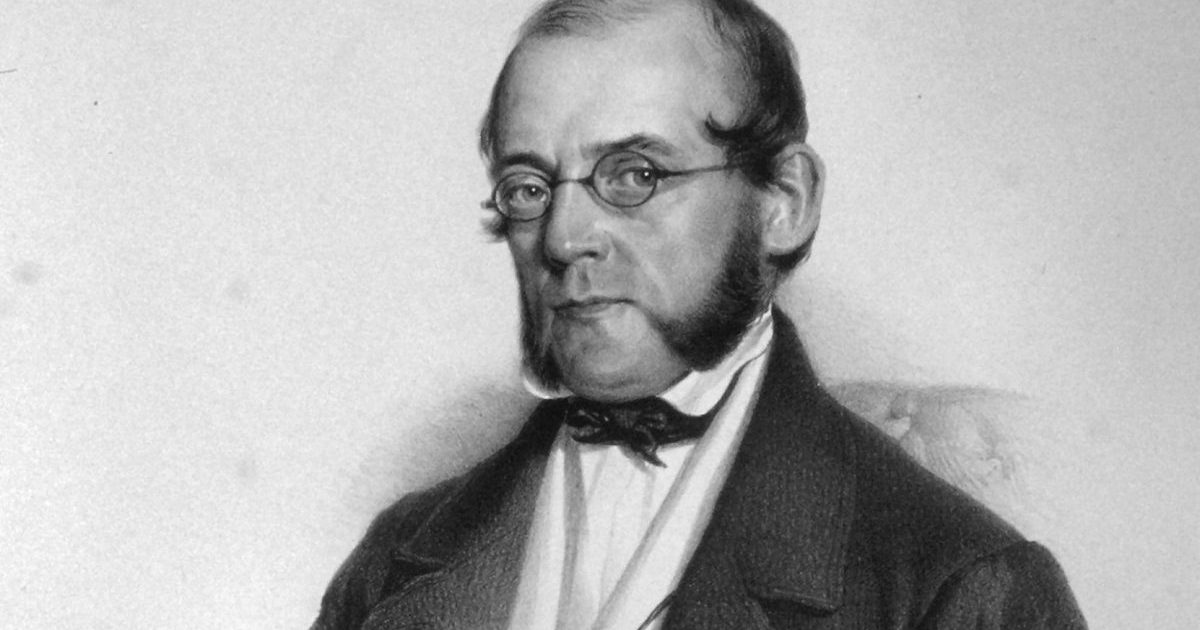
It isn’t just the injuries and other on-screen homages to Miller’s medical career that show him off as a bonafide medical professional – it turns out that even the name of the film’s lead character (and thus the franchise) has an interesting history behind it. Max Rockatansky is named for the 19th-century pathologist Carl von Rokitansky, who was born in Bohemia (a client state of the Holy Roman Empire and the geographical area known today as the Czech Republic). Rokitansky was instrumental in promoting ‘pathological anatomy’, the act of diagnosing based on the examination of all kinds of tissues, and instilling the discipline of bedside manner that we know today.
Rokitansky later went on to be a founding faculty member of the Second Vienna Medical School, and was part of the transition of medicine from natural philosophy to a more regimented science. Quite why Miller chose this figure to inspire his grimacing road cop is unknown – he probably didn’t even own a car! Looking back, it may simply have been because he had a cool-sounding name.
4. The ‘Get Out of Jail Free’ card was real

Even though Mad Max’s setting is an indefinite “few years into the future,” relative to 1979, due to its low-budget realism and recognisable car types, the film feels far more present than you may think. This was especially true for the actors, who often had to encounter the same problems their characters did – just with fewer explosions and less murder. For example, Goose’s ‘Get Out of Jail Free’ card that he flashes the dispatch is a nod to a real-life object, one that was key to keeping the film’s cast, crew and extras out of trouble with the police. Since the biker gangs working on the movie had to ride to set every day, and did so in costume and often with their weaponry on full display – props, of course, but realistic – the team behind the film regularly fell foul of the police.
To smooth the experience of being pulled over, Miller and Kennedy created a letter that was given to the bikers explaining that they were acting in a film and asking for the local authorities’ co-operation with the strange circumstances. Given the wild look of their costumes, the bikers were also refused service at banks and restaurants, without even their letters helping them.
3. Hugh Keays-Byrne’s performance was NOT based on Genghis Khan

Debunking another urban myth about the film, it’s regularly stated that Hugh Keays-Byrne based his portrayal of gang leader Toecutter was based on the infamous Mongolian warlord Genghis Khan. However, Keays-Byrne has since confirmed in an interview that this is entirely false. But the rumour does have an interesting origin, with Khan being mentioned in the script as a comparison for that wild Toecutter hairstyle. Interestingly, several of the actors in the film – including Hugh Keays-Byrne, Tim Burns and Reg Evans – are classically trained Shakespearean actors.
Keays-Byrne has noted that he’s comfortable with people still recognising him as Toecutter, in spite of his long career after the film’s release. “I understand it was the most popular thing I’ve done.” The actor was paid a paltry $2,000 for his work on the film. Even Mel Gibson, the unequivocal star of the picture, was paid only $15,000. Still, that’s 4% of the film’s budget.
2. The story was based on a real oil crisis

The film’s screenwriter, James McCausland, hasn’t really been mentioned here so far, but he was clearly critical in forging the film’s themes (and soon to be the themes of a massive global franchise). McCausland has described the experience of writing the script with Miller in an article for Australia’s Courier Mail: “In 1973,” writes McCausland, “the Arab oil-producing nations convulsed most of the world by tightening the spigots on their wells and sharply reducing production.
“Yet there were … signs of the desperate measures individuals would take to ensure mobility. A couple of oil strikes that hit many pumps revealed the ferocity with which Australians would defend their right to fill a tank. Long queues formed at the stations with petrol – and anyone who tried to sneak ahead in the queue met raw violence. People would do almost anything to keep vehicles moving.” McCausland has a cameo in the film as ‘Man Wearing Apron’.
1. The film was shot with the same lenses Sam Peckinpah used to film The Getaway

Visually, it’s amazing how well Mad Max’s visuals hold up, especially for a film from 1979 created on a budget no deeper than a bog-standard paddling pool. But for all that much of the stunts were filmed on location on the fly, there was real effort put into getting the look of the film exactly right. Part of what makes the film still look so visually appealing to this day is the use of an anamorphic lens, adding a smooth quality to the production.
Miller was insistent on using this kind of lens, and thankfully he got lucky enough to find some. He’d heard a rumour that the film lenses Sam Peckinpah had used in 1972’s The Getaway were available to buy at a remarkably cheap price. The lenses had been damaged during the filming of Peckinpah’s crime film, and only one 35mm lens was able to be salvaged. This single working lens was used for the entire film, meaning that the exact piece of equipment featured in two classic 70s action films, filmed on two different sides of the world.

